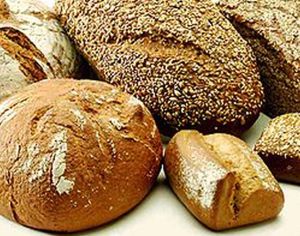Bread, pizza, and cookie futures began falling late last week, followed more modestly by cakes, pies, crackers and pretzels.
 Tel Aviv, April 2 – Commodities traders in Israel have noticed a recent decrease in the price of futures for potentially leavened grain products, a seasonal dip that almost always occurs in the late winter and early spring as holders of the goods tend to sell off their inventories.
Tel Aviv, April 2 – Commodities traders in Israel have noticed a recent decrease in the price of futures for potentially leavened grain products, a seasonal dip that almost always occurs in the late winter and early spring as holders of the goods tend to sell off their inventories.
Bread, pizza, and cookie futures began falling late last week, followed more modestly by cakes, pies, crackers and pretzels. This week has seen those prices continue their decline, joined by those of brownies, breaded chicken, batter-dipped fish, bechamel sauce, quiche, and various specialty pastries such as rugelach. Investors also rushed to arrange the sale and delivery of their existing stocks of pasta, pancakes, waffles, muffins, breakfast cereals, dumplings, and other flour-based foodstuffs.
Commodities market indexes reported that pita, sliced white bread, baguette, and roll futures began dropping as of last Tuesday, losing 4% of their value from the day before. Each successive day bought a further decrease in price, falling a full 60% as of yesterday to only NIS 11.58 per tonne. The precipitous decline, rather than indicating an industry-wide collapse, represents an annual event that occurs around the same time each year, in the transition of winter to spring, explains Haggai Pesach of Balye-Raeh, a clearinghouse for leavened goods.
“There seems to be a certain class of commodities investor that liquidates his entire stock of certain consumable goods in March or April, then gradually replenishes that inventory over the ensuing weeks and months,” he said. “Other investors often wait specifically for that annual cycle to kick in so they can score tremendous bargains on futures of, say, donuts or Kit Kat bars, and that robust matrix of liquidators and bargain-hunters is what keeps the bottom of the market from completely dropping out.”
Pesach also noted that this year’s drop was comparable in scale to that of previous years, though slightly later in the calendar year. “There’s always a range of a few weeks in which this occurs, but it has never been as early as February or as late as May,” he said.
The only substantial difference over the years has been one of trade volume, said E. Lou Hotzi-Annu, an analyst who studies long-term commodities trends. “There are more and more sellers each year, but so far there has been a commensurate increase in bargain-basement demand, as well, so we haven’t seen any changes that could signal anything dangerous,” he said.
If the grain products futures market fluctuations follow the pattern set in previous years, within the next business day or so the drastic price movement will cease entirely, and then increase slowly before stabilizing at levels mirroring those before the annual price drop, according to Hotzi-Annu.
“Overall it’s quite a stable niche of the commodities trade – and really, that should be enough for us.”
Please support – our work through Patreon.
Buy In The Biblical Sense: https://www.amazon.com/dp/B0B92QYWSL




